Cheat Sheet: Pressure Groups | Indian Polity for UPSC CSE PDF Download
Introduction
Pressure groups are groups of people who join together to support shared interests. They try to change government decisions without running for elections. This chapter explains what pressure groups are, how they work, their types, examples, roles, and problems in simple terms. It helps you understand their importance in India’s democracy.
Features of Pressure Groups
Pressure groups focus on specific issues, like farmers’ rights or business needs, and work to get the government to listen. They’re different from political parties because they don’t want to run the government.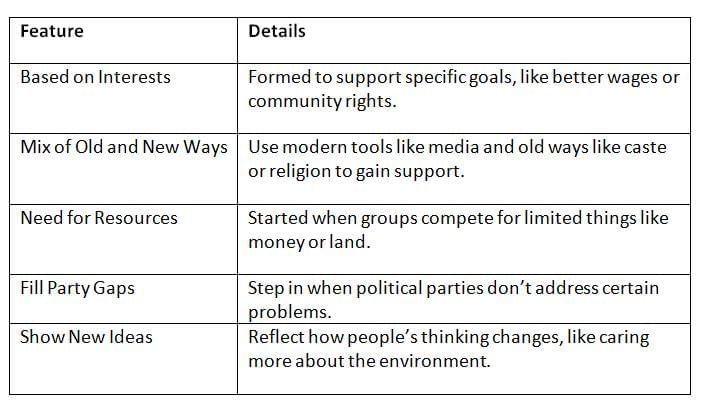 Key Points: Pressure groups work for specific causes using old and new methods. They fill gaps left by political parties but may focus only on their own goals.
Key Points: Pressure groups work for specific causes using old and new methods. They fill gaps left by political parties but may focus only on their own goals.
Ways Pressure Groups Work
Pressure groups use different methods to convince the government and people to support their ideas. They stay within legal limits.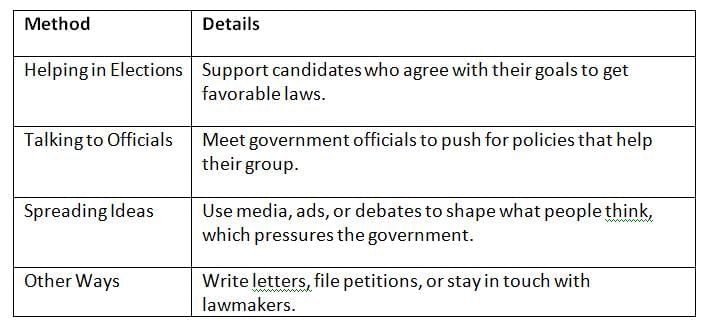
Key Points: Pressure groups use elections, talks with officials, and media to push their ideas. These methods work but can sometimes be too forceful.
Types of Pressure Groups
India has many kinds of pressure groups. Some are well-organized, while others act suddenly or are based on family or community ties.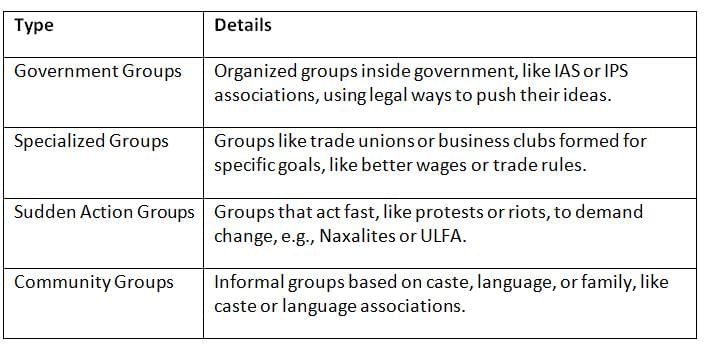
Key Points: Pressure groups can be organized, sudden, or community-based. Each type works differently, but some can cause trouble if too aggressive.
Examples of Pressure Groups in India
India’s pressure groups cover many areas, like business, farming, students, and tribes. They represent different people and causes.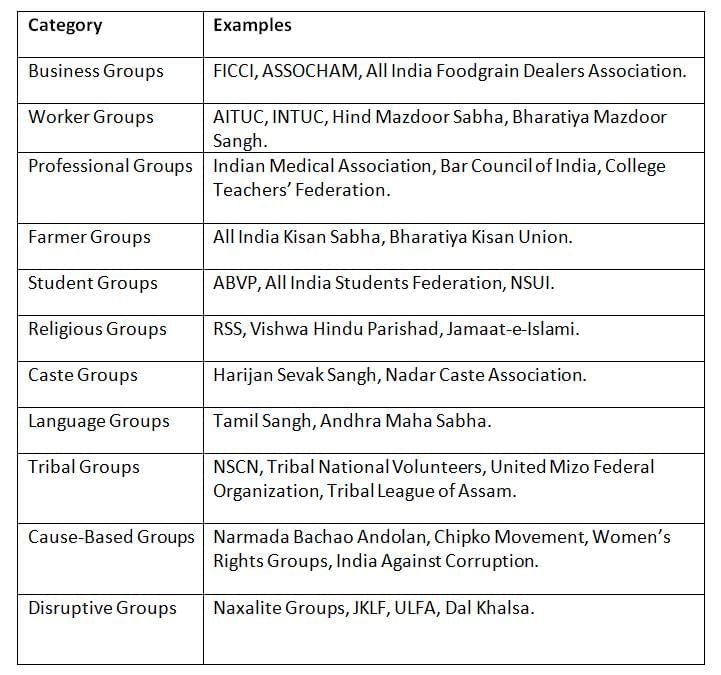 Key Points: India’s pressure groups represent everyone from farmers to students. They push for change but some focus on narrow or harmful causes.
Key Points: India’s pressure groups represent everyone from farmers to students. They push for change but some focus on narrow or harmful causes.
Roles and Importance of Pressure Groups
Pressure groups help democracy by sharing people’s needs with the government. They make laws better and keep the government in check.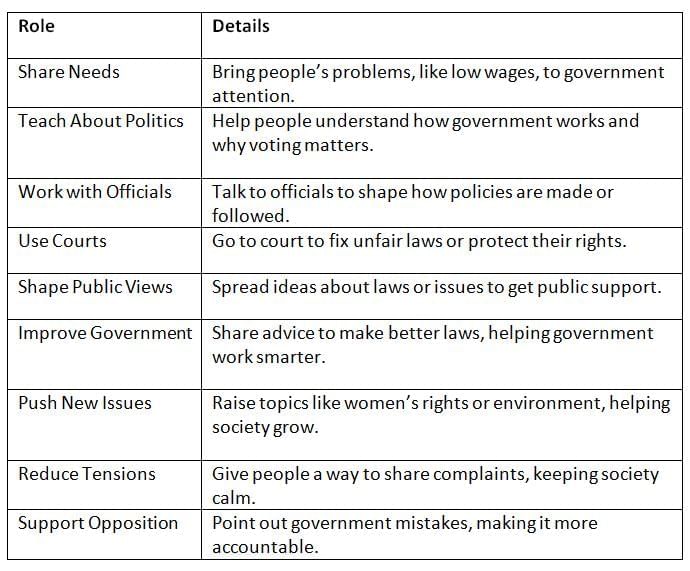 Key Points: Pressure groups make government better by sharing ideas, raising new issues, and keeping it accountable. They help democracy work smoothly.
Key Points: Pressure groups make government better by sharing ideas, raising new issues, and keeping it accountable. They help democracy work smoothly.
Problems with Pressure Groups
While pressure groups do good, they can cause issues by focusing too much on their own group or causing trouble.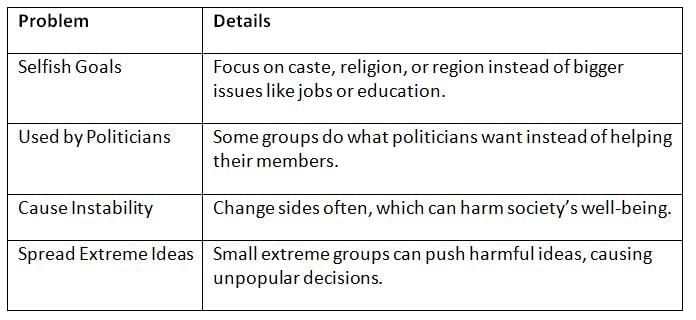
Key Points: Pressure groups can harm democracy if they push selfish or extreme ideas or get too close to politicians.
Conclusion
Pressure groups are an important part of India’s democracy. They help people share their needs and make government listen. From farmers to students, they cover many interests and improve laws. But they can focus too much on their own groups or cause trouble. Understanding what they do and their problems helps us see how they shape India’s democracy.
|
142 videos|777 docs|202 tests
|
FAQs on Cheat Sheet: Pressure Groups - Indian Polity for UPSC CSE
| 1. What are the main features of pressure groups? |  |
| 2. How do pressure groups operate to achieve their objectives? |  |
| 3. What are the different types of pressure groups? |  |
| 4. Can you provide examples of pressure groups in India? |  |
| 5. What are some challenges faced by pressure groups? |  |















